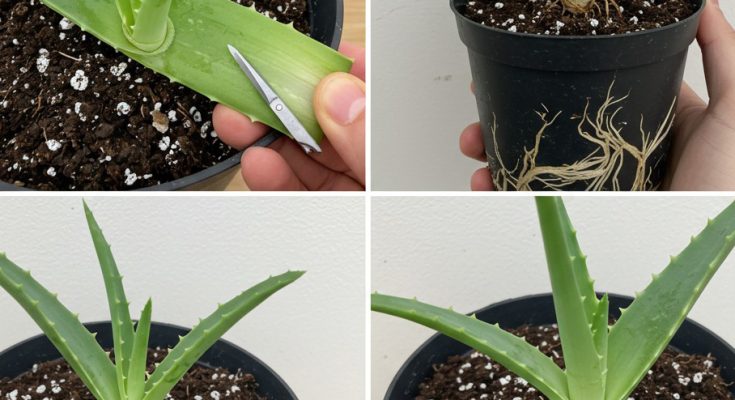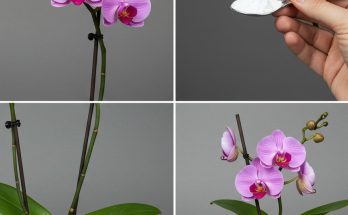Why Aloe Belongs in Your Home
Aloe vera is more than just a plant—it’s a natural first-aid kit in leaf form. Its gel is widely used for soothing minor burns, moisturizing skin, and easing irritation from insect bites. Beyond its practical benefits, aloe’s thick, upright leaves and distinctive rosette shape make it a striking addition to any interior. It pairs effortlessly with a variety of decorative styles, from rustic to modern minimalist.
Choosing the Perfect Pot
Aloe thrives in containers that allow its roots to stay dry and well-aerated. The pot you choose can also enhance its visual appeal.
-
-
Terracotta or unglazed clay pots are ideal for aloe because they are porous, helping excess moisture evaporate quickly.
-
Ceramic pots with drainage holes offer a polished look and are available in countless styles and colors.
-
Decorative cachepots without holes can be used as outer covers—just make sure the plant is in a smaller, well-draining pot inside.
-
Size is important too. Select a container that’s just slightly larger than the aloe’s root ball. A pot that’s too big will hold excess soil and moisture, increasing the risk of root rot.
The Best Soil Mix for Aloe
Aloe vera naturally grows in sandy, arid environments, so it needs fast-draining soil to prevent water from sitting around its roots. A cactus or succulent potting mix is ideal. You can also make your own blend:
-
-
2 parts potting soil for nutrients and structure
-
1 part coarse sand for quick drainage
-
-
1 part perlite or pumice for aeration
This combination ensures that water drains rapidly while still providing enough stability for the plant.
Planting Aloe in Pots
-
-
Prepare the pot by adding a small layer of soil at the bottom.
-
Remove the aloe from its current container, gently loosening the roots if they’re compacted.
-
Position the plant so the base of the leaves sits above the soil line—burying leaves can lead to rot.
-
-
Fill in around the roots with soil, pressing gently to secure the plant without compacting too much.
-
Water lightly and let any excess drain completely before placing the pot in its chosen spot.
Light and Temperature Requirements
Aloe vera loves light—bright, indirect sunlight is best. Place it near a south- or west-facing window for at least six hours of light a day. It can tolerate some direct sunlight, but intense rays can scorch the leaves if the plant isn’t accustomed to them.
Ideal indoor temperatures range from 60°F to 85°F (15°C to 29°C). Keep aloe away from cold drafts, heaters, or air conditioning vents, which can cause stress.
Smart Watering Practices
Aloe is drought-tolerant and prefers infrequent watering. Always let the soil dry out completely before watering again. During the growing season (spring and summer), this usually means watering every 2–3 weeks. In cooler months, reduce watering to once a month or less.
When you do water, give the plant a thorough soak until water drains from the bottom of the pot. Never allow it to sit in standing water.
Fertilizing Aloe
Aloe doesn’t need heavy feeding. Use a balanced, diluted liquid fertilizer once every 6–8 weeks during spring and summer. Avoid fertilizing in fall and winter, as the plant’s growth slows naturally.
Using Aloe’s Gel
Aloe vera’s gel is easy to harvest and use for minor skin care and first-aid purposes. To collect it:
-
-
Choose a mature, outer leaf.
-
-
Cut it near the base with a clean knife or scissors.
-
Slice the leaf open and scoop out the gel.
The gel can be applied directly to the skin. Always do a patch test first to ensure you have no allergic reaction. Avoid overharvesting—remove only a few leaves at a time so the plant stays healthy.
Styling Aloe in Your Space
Aloe’s bold shape makes it a natural focal point.
-
-
In modern interiors, pair it with a sleek white or black pot for a clean, contemporary look.
-
In rustic or bohemian spaces, terracotta pots and woven baskets complement its earthy feel.
-
Aloe also works well in mixed succulent arrangements for a desert-inspired display.
-
Common Aloe Problems
-
-
Mushy leaves: Usually caused by overwatering. Allow soil to dry completely.
-
Brown tips: Can result from underwatering, sunburn, or low humidity.
-
Pale or stretched leaves: A sign of insufficient light—move to a brighter location.
-
Final Thoughts
Aloe vera is the perfect combination of beauty and utility. Grown in a stylish container, it enhances your home’s décor while offering natural skin care benefits right at your fingertips. By giving it the right pot, fast-draining soil, plenty of light, and occasional watering, you’ll enjoy a healthy, long-lived plant that’s as practical as it is attractive.

